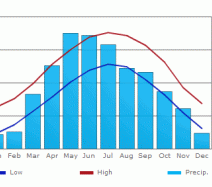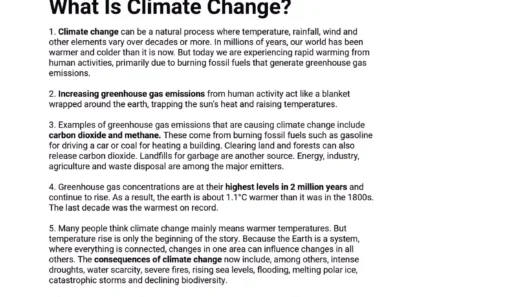Understanding the term “climate” is essential for grasping broader concepts related to environmental science, meteorology, and public policy. As the world faces unprecedented environmental challenges, this knowledge becomes increasingly vital for informed discussions and actions.
Climate signifies the long-term atmospheric conditions prevalent in a particular region, generally gauged over a span of 30 years or more. Unlike weather, which refers to short-term fluctuations in atmospheric conditions, climate encompasses the averages, variations, and extremes of temperatures, humidity, precipitation, and wind patterns over an extended duration. This concept reflects a tapestry woven from myriad elements, including geographical features, ocean currents, and human activities.
The implications of climate are profound, impacting agricultural practices, water supply, biodiversity, and human health. A thorough understanding of climate is crucial for grasping the current debates surrounding climate change and global warming.
The distinction between climate and weather is pivotal in climate science. Weather encapsulates ephemeral phenomena: a rainy day, a heatwave, or a snowstorm. These events occur within the short term and can fluctuate dramatically based on various factors. In contrast, climate stands as a steadfast backdrop to these variations, a persistent narrative crafted from data collected over decades. This long-range view is essential for scientists and policymakers as they devise strategies to mitigate climate-related issues.
Distinctive climatic zones exist worldwide, shaped by latitude, altitude, and proximity to oceans and major landforms. Tropical climates, characterized by high temperatures and humidity, contrast sharply with arid deserts and frigid polar regions. Recognizing these zones aids in comprehending regional ecological dynamics and informs agriculture, urban planning, and disaster response strategies.
One of the central elements in the conversation about climate is climate change. This phenomenon refers to significant alterations in temperature, precipitation, and other atmospheric conditions over extended periods, primarily attributed to human activities, such as deforestation and the burning of fossil fuels. As greenhouse gases accumulate in the atmosphere, they trap heat, leading to a cascade of environmental transformations: melting ice caps, rising sea levels, and shifting weather patterns. Collectively, these changes pose serious threats to ecosystems, human health, and the global economy.
With increasing awareness and urgency surrounding climate issues, it is essential to understand the potential ramifications of these changes. Extreme weather events are becoming more frequent and intense due to climate change, resulting in devastating floods, hurricanes, and droughts. These disasters not only lead to loss of life but also disrupt communities, displace populations, and exact enormous economic costs.
A wide range of methods exists for studying climate. Paleoclimatology, for instance, examines historical climate data preserved in ice cores, tree rings, and sediment layers, allowing scientists to reconstruct past climates and understand natural climate variability. Real-time data gathered through satellite technology and ground-based observations also contribute significantly to our understanding of current climate conditions. Furthermore, climate models, which simulate the complex interactions within the Earth’s systems, help predict future scenarios based on various greenhouse gas emission trajectories.
The interplay between human activity and climate is undeniable. Our energy consumption, waste management, and land-use practices have far-reaching effects on climate stability. Urban areas, with their sprawling infrastructure and transportation systems, significantly contribute to unnecessary greenhouse gas emissions. Conversely, sustainable practices, like renewable energy adoption and conservation efforts, can mitigate adverse effects. Understanding the climate is not an abstract academic exercise; it is intrinsic to our everyday lives and necessitates collective action.
Moreover, educating the public about climate concepts is paramount. Citizens equipped with a firm understanding of climate can advocate for policy changes, contribute to grassroots movements, and inspire others to become equally engaged. Schools and universities have a crucial role in incorporating climate education into their curricula, fostering a generation that is knowledgeable and proactive about environmental stewardship.
Community initiatives focusing on climate resilience and sustainability are essential in addressing the impacts of climate change at local levels. Urban gardening, energy conservation programs, and renewable energy projects empower residents to take ownership of their environmental responsibilities. These activities not only enhance community bonds but also bolster local economies and foster a sense of collective purpose.
In conclusion, grasping the essence of climate and its implications allows individuals to navigate the intricacies of environmental challenges we face today. The knowledge of climate—its definitions, its distinctions from weather, its various influences—enables us to engage thoughtfully in discussions about climate policy and climate justice. As our planet faces contradictory forces arising from climate change, understanding climate is not merely informative; it is actionable. Responsibility rests with each one of us to contribute to a more sustainable future, where informed choices lead to positive outcomes for our planet and all its inhabitants.







